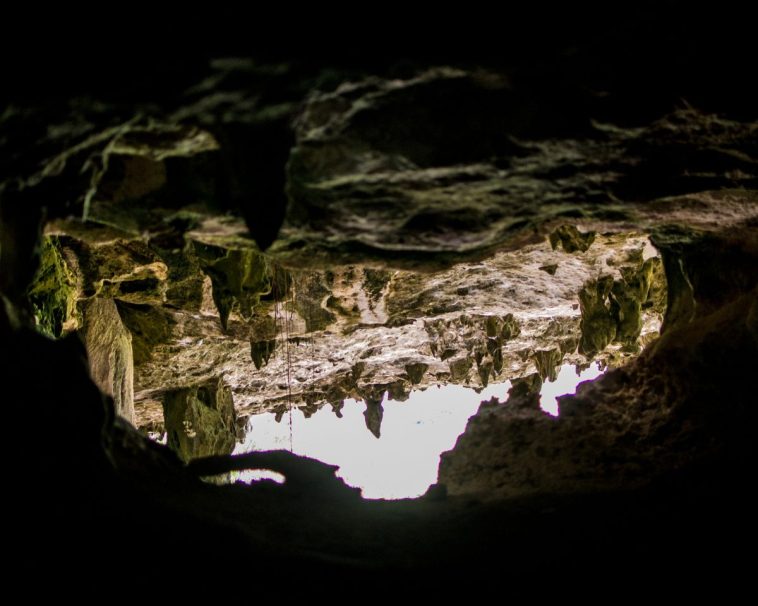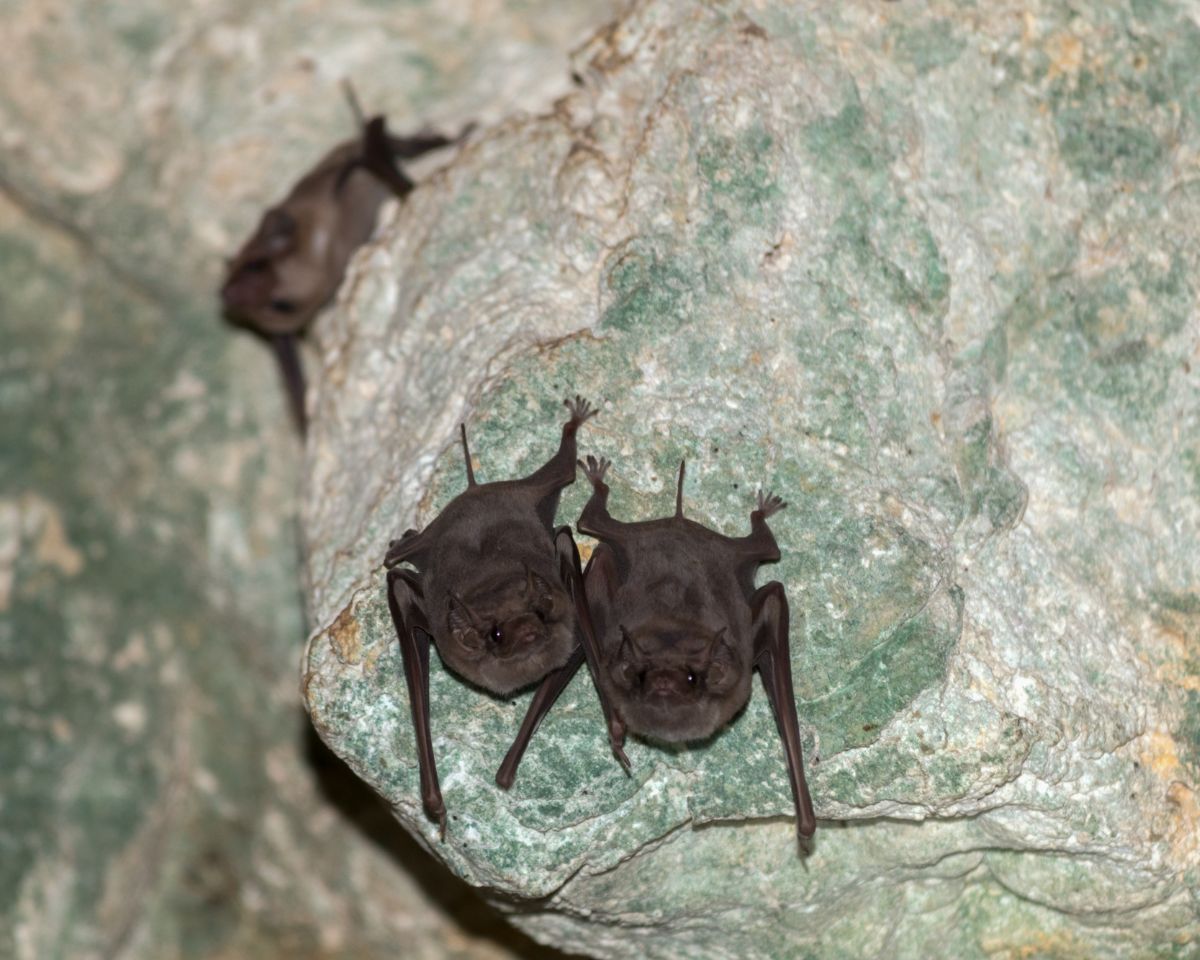Bat caves

Bat caves are natural or man-made structures that serve as habitats for bats. These caves provide shelter and protection for bats during the day and are typically located in areas with ample food sources and suitable climate conditions.
Bat caves are found all over the world, from North America to Asia. In the United States, the Bracken Cave in Texas is home to millions of Mexican free-tailed bats during the summer months. This cave is essential for the survival of the species and offers a stunning sight as the bats fly out at sunset.
Bat caves come in various forms, including maternity caves that serve as nurseries for female bats to deliver and nurture their young in warm and humid locales. These caves provide a safe haven for mother bats to nurse their offspring and promote the growth and development of juvenile bats.
Bat Caves Around the World
Bat caves, diverse in their geographic spread, can be found from the heartlands of North America to the expansive continents of Asia.
The United States is famed for hosting some of the most notable bat colonies globally. The crown jewel among these is the Bracken Cave in Texas, a bustling metropolis that shelters millions of Mexican free-tailed bats during the warm summer months. This maternity cave plays a vital role in the survival of the species, offering a mesmerizing spectacle for visitors as they witness the mass exodus of bats against the backdrop of the setting sun.
A journey across continents will lead you to the breathtaking Khao Yai National Park in Thailand. This UNESCO World Heritage Site nurtures a variety of bat species including the distinctively patterned wrinkle-lipped bat and the bumblebee bat, holding the title of the world’s smallest mammal.
The Khao Yai National Park also boasts bat-friendly caves open to curious visitors. Among these, the Pha Kluai Mai Cave and the Khao Luang Cave stand out. These caves offer more than just a sanctuary for bats; they reveal a rich tapestry of nature’s artwork through stunning stalactites and stalagmites. It’s an unmissable stop on the itinerary of nature lovers and adventure seekers alike.
Different Types of Bat Caves

Bat caves are not simply monolithic structures but come in an assortment of forms, such as maternity caves. These serve as nurseries where female bats deliver and nurture their young. The maternal colonies are havens where mother bats can nurse their offspring in comfort and safety. These caves are typically nestled in warm, humid locales, which provide the perfect conditions for the growth and development of the juvenile bats.
In addition to maternity caves, there exist bat caves of epic proportions, housing the largest bat colonies. These cavernous habitats can accommodate thousands of bats, providing them a fortress of safety and security. Such caves are often tucked away in secluded, isolated locations like the depths of dense forests or high mountain ranges.
These caves are lifelines for the survival of bat populations. They not only offer shelter and protection from predators but also ensure a constant supply of food.
Bat Cave Ecosystems
Immersing ourselves in the distinctive ecosystems that thrive within bat caves unveils the intricate web of life, underscoring how each species depends on the other in a complex, survival-oriented symbiosis.
Certain bat caves, known as maternity caves, serve as nurturing grounds where mother bats form maternal colonies to rear their young. A key inhabitant of these caves is the Mexican free-tailed bat, whose droppings or guano nourish a rich ecosystem teeming with bacteria and fungi. These microscopic life forms decompose the guano, releasing nutrients that fuel the growth of insects, which subsequently become a food source for other cave inhabitants like spiders and centipedes.
Bat caves, in their diverse forms, host a plethora of species, from cave crickets and salamanders to blind fish. These creatures have evolved to thrive in the shadowy, damp confines of the caves, sustained by the nutrient-rich bat guano.
In some unique instances, bat caves serve as the exclusive habitat to certain rare species, found nowhere else on the globe. By safeguarding these precious ecosystems and their bat inhabitants, we can contribute to the survival of these extraordinary and crucial species.
Bat Cave Conservation
Guarding these delicate subterranean ecosystems, and the life teeming within, is paramount to maintaining the intricate equilibrium of nature. This is akin to the meticulous care and precision required to prevent a precariously balanced Jenga tower from toppling.
Efforts geared towards bat cave conservation are instrumental in preserving the ecological wellness of these systems.
Maternity caves, where female bats converge to birth and nurture their young, are particularly susceptible to disturbances and demand special protection. Often situated near cave entrances, these sites are at risk from human intrusion and habitat destruction.
A practical approach to safeguarding these maternity caves involves establishing robust maternal colony management plans. These include restricting human access during certain periods when the bats are present, and embracing cave management practices that minimize disruptions to the bats and their dwellings.
Equally important is raising public awareness about the importance of bat conservation and the key roles bats play in sustaining healthy ecosystems. This education is vital for securing the long-term survival of these captivating creatures and their habitats.
By collectively striving to protect bat caves, we contribute to preserving our planet’s rich biodiversity and ecological harmony.
Bat Cave Protection

You can contribute to the preservation of our planet’s natural splendor and equilibrium by supporting endeavors to safeguard bat caves and their resident colonies. The protection of bat caves is fundamental in maintaining a hospitable environment for these creatures, given their pivotal roles in insect population control and plant pollination.
In preserving their habitats, we also safeguard the biodiversity integral to our ecosystems. A key component of bat cave conservation lies in the protection of maternity caves, the nurturing homes of maternal colonies. These caves furnish a secure and steady environment for female bats to birth and rear their offspring.
It’s crucial to understand that any disturbances to these colonies can inflict enduring impacts on the bat population. By honoring their space and avoiding any activities that could disrupt their habitats, we can aid in ensuring the survival of these vital creatures for future generations.
Bat Cave Preservation
The preservation of the distinctive ecosystems within subterranean environments is integral to sustaining biodiversity, despite potential apprehensions about the expenses linked to monitoring and safeguarding these sensitive habitats.
Bat caves, specifically, are vital sanctuaries for a multitude of bat species, offering them apt roosting locales and secure zones for rearing their young. Maternity caves, such as the Bracken Cave in Texas, hold particular importance, functioning as breeding hotspots for millions of Mexican free-tailed bats.
The preservation of bat caves entails a series of measures, including minimizing human interference, curbing the spread of pathogens, and managing external influences that could impact the cave’s microclimate. This is of critical importance as any disruption to the bats’ natural dwelling can trigger far-reaching repercussions, potentially precipitating the decline of entire bat colonies.
Through the execution of these conservation strategies, we can facilitate the survival of these essential creatures and the conservation of their unique ecosystems for future generations.
Bat Cave Adaptations
The adaptations of bats to their cave dwellings are indeed captivating. These airborne mammals have evolved to persist in the absolute darkness and scarcity of food sources within caves.
A noteworthy adaptation is their employment of echolocation for navigation and prey location. They emit high-frequency sounds that ricochet off objects, returning as echoes to their finely-tuned ears.
Bats also possess distinct physical adaptations, such as their wings, which are essentially elongated finger bones sheathed in a thin layer of skin. This design enables them to fly adeptly within confined spaces and navigate the intricate maze of cave systems.
Furthermore, some bat species have evolved to roost in large colonies within particular areas of the cave. Maternity caves, for instance, are where females rear their young, and foot caves serve as resting spots during migration.
These remarkable adaptations have empowered bats to thrive in their cave habitats for millions of years, playing an indispensable role in maintaining the fragile equilibrium of the ecosystem.
Bat Cave Biodiversity
Bat colonies can encompass hundreds, even thousands, of individuals. These bats utilize bat caves as safe sanctuaries for roosting and nurturing their young.
Often, the floor of a bat cave is carpeted with guano (bat droppings), which serves as a natural fertilizer for the surrounding ecosystem. This guano sustains a diverse spectrum of insects, which subsequently lure predators such as spiders and scorpions.
Even larger mammals, like raccoons and opossums, set up residence in bat caves, capitalizing on the plentiful food resources.
However, it’s not solely fauna that flourishes in bat caves. The distinctive microclimate within these caves also fosters a variety of flora. The high humidity and cool temperatures constitute the ideal environment for fungi and mosses to thrive.
The roots of these plants frequently penetrate deep into the cave’s substrate, contributing to the stabilization of the cave’s structure. In some instances, these plants have been discovered to utilize bat guano as a nutrient source.
Bat Cave Research
Research on bat caves is a crucial discipline for conservationists and biologists, as these caves function as indispensable habitats for an array of species, encompassing bats, insects, and crustaceans.
Researchers typically equip themselves with specialized gear, such as headlamps, gloves, and respirators, to gather data about the cave’s residents. They might monitor bat colonies, study their behavior, and gather samples for genetic scrutiny.
Maternity caves, where female bats birth and rear their offspring, hold particular appeal for researchers due to their critical role in the survival of bat populations. Accessing these caves can present challenges, requiring navigation of steep slopes, crawling through tight passageways, or employing a footbridge to reach the targeted location.
Despite these challenges, research on bat caves remains a vital component of conservation endeavors. It aids in identifying threats to these delicate ecosystems and formulating strategies for their protection.









